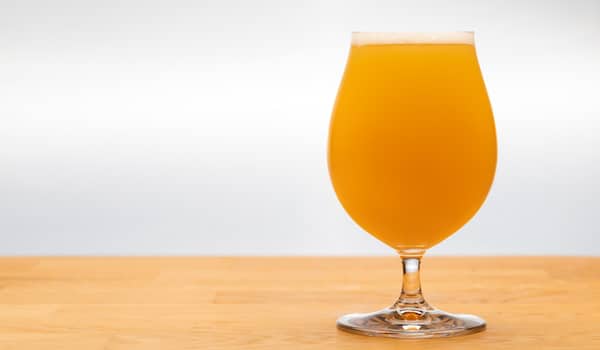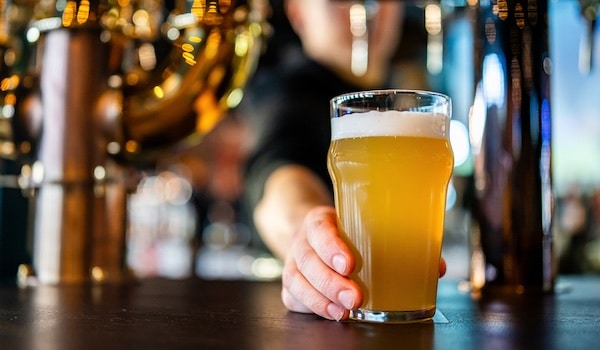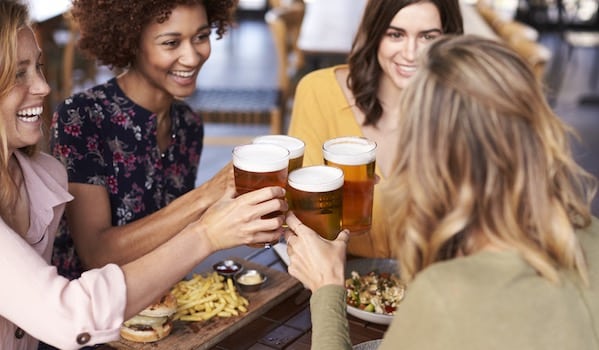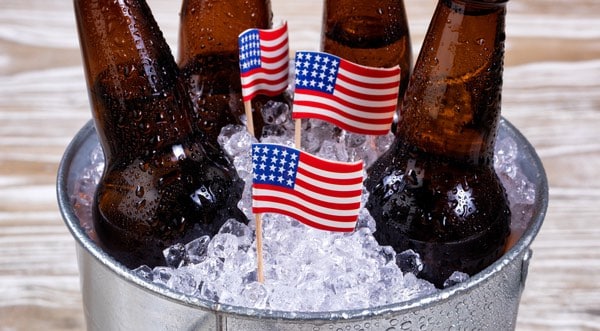
Introduction to Double India Pale Ale (DIPA)
Hoppy beers have been at the center of the craft beer world for over 3 decades. From Sierra Nevada Pale Ale to Dogfish Head 60 Minute IPA, these bitter but drinkable beers turned more macro drinkers onto craft beer than any other beer category. Brewers are rarely content to rest on their laurels, so you began to see more aggressively hopped versions of IPA with higher ABV to match the flavors.
Thus, the Double IPA (or Imperial IPA) style was born. It didn’t take long for these boozier IPAs to take over the scene, and hop-heads were particularly drawn to these special releases. Even with barrel-aged stouts and sours becoming more popular, Double IPA remains the true beer geek’s go-to. But which are worth trying?
RELATED: What Is an India Pale Ale? Everything About IPA Beer
Definition and Origins of the Double IPA
What Does “Double” Really Mean?
“Imperial” and “double” refer to increased hops and malts, not the literal doubling of ingredients. The increased malt bill provides stronger alcohol and a fuller body, while the hops add bolder flavor and aroma. The higher alcohol content is also a key feature of these beers, with a generally accepted range of 7.5% to 10% ABV and above that (there’s a much smaller class of beer called Triple IPA).
Brief History of the Style
In the 1990s, West Coast breweries like Russian River began hopping their pale ales and IPAs more aggressively, along with adding more malts. The result was a boozier and more robust IPA that enhanced the same bitterness and piney flavors of their earlier beers. The demand was there, as brands like Pliny the Elder became wildly coveted as word got out organically. Releases were events; beer drinkers from all over the country would travel to snag bottles from the brewery or at beer bars.
On the opposite side of the country, The Alchemist’s Vermont-based brewery used a similar formula, but with a different flavor profile. Heady Topper had more alcohol and more hops than a standard IPA, but the juicy and slightly sweet flavor profile was something new. This double IPA introduced the “hazy” or “New England-style” IPA to the world.
Traditional West Coast and New England IPAs were always more popular when they were stronger and labeled “double” or “Imperial.” The added heft of the malt bases also allowed for hop experimentation as brewers introduced new hop varieties to drinkers. The best examples of these premium IPAs were lauded by experts and coveted by craft beer fans, and double IPAs are some of the most popular beers to this day.
Flavor Profile and Characteristics of a Double IPA
Key Flavor Characteristics
- Intense hop aromas like citrus, pine, and resin are present in West Coast DIPA, while tropical fruits dominate New England DIPA.
- High bitterness (often 60–120 IBU) is a hallmark of West Coast DIPAs, especially those using Cascade or Centennial hops.
- A balanced and slightly sweet malt base usually provides a counterpoint to the hop bitterness.
- Noticeable alcohol warmth is common, especially in stronger DIPAs (9% ABV and above).
Color and Appearance
West Coast versions will have a darker amber or reddish hue from the increased malt in the recipe. Hazy double IPAs will have a lighter color that’s opaque. Carbonation will be slightly thinner than standard IPAs.
Mouthfeel and Body
Expect a much fuller mouth feel as the substantial malt in the recipe creates a more robust body. New England double IPAs will have a thick (almost chewy) mouthfeel.
Are Double and Imperial IPAs the Same?
“Imperial” and “double” are truly interchangeable, and it is up to the brewers to determine what they call it. Imperial can also encompass stronger beers that would otherwise be known as “triple IPAs.”
| Style | ABV Range | IBU Range | Flavor Notes |
| IPA | 5.5–7.5% | 40–70 | Hoppy, balanced, crisp |
| Double IPA | 7.5–10% | 60–120 | Bold, malty, intense hops |
| Imperial IPA | 7.5–10%+ | 60–120+ | Often synonymous with DIPA |
| Triple IPA | 1q%+ | 60–120+ | Quite booze forward with massive hop profiles |
Pros and Cons of Double IPAs
Pros:
- Flavor bombs: Bold and complex flavors are all on full display, especially the malt sweetness and hoppy bitterness.
- Nice buzz: Higher ABV will give drinkers a warming buzz.
- Showcases hops: These brews are ideal for hop lovers as the characteristics and unique aromas of the hop strains are pronounced.
Cons:
- Alcohol taste: Many drinkers find the flavor overpowering or even too boozy, as there will be some heat from the alcohol.
- Not sessionable: These beers hover around 9% ABV, so you can’t drink too many without a headache the next day!
- More expensive: The price point is higher due to the additional ingredients used in the brewing process and ABV.
Popular Double IPAs to Try
- Pliny the Elder – Russian River Brewing (CA): Hopped with Amarillo, Centennial, CTZ, and Simcoe hops, the layers of floral, citrus, and pine notes, Pliny epitomizes the classic West Coast flavor. It’s the original Double IPA and remains one of the absolute best beers out there.
- Heady Topper – The Alchemist (VT): Hazy IPAs are everywhere these days. But without this Vermont mainstay, the New England IPA category would not exist. There’s a nice balance between juicy sweetness and bitterness that lesser examples of the style don’t have.
- Hopslam – Bell’s Brewery (MI): One of the original examples of an “event beer,” Hopslam’s annual release was met with ravenous demand—the 10% ABV beer packs in massive hop flavor with a piney and resinous finish. The addition of honey lent some sweetness that makes this aggressive beer more balanced.
- 90 Minute IPA – Dogfish Head (DE): The lore surrounding Dogfish’s “Minute” series IPA is as iconic as the beer itself. Hopping up the standard 60 Minute IPA into a 90-minute version. The experiment yielded a delicious classic West Coast IPA brewed all the way out in Delaware. Keep an eye out for the more aggressive 120 Minute version…
- Two Hearted (Double Two Hearted) – Bell’s Brewery: At 11% ABV, the Imperial version of Two Hearted Ale (widely regarded as one of the best beers in America) takes everything the original does and simply does more of it. Expect a fantastic Centennial hop flavor with a nice malt backbone.
- Dreadnaught – 3 Floyds (IN): The aggressive hop additions (100 IBU) strike a lovely balance between malt sweetness of this delicious amber IPA. It finishes crisp, and its 9% ABV is hard to detect, so sip carefully!
- Maximus – Lagunitas (CA): Lagunitas IPA it’s one of the most ubiquitous craft beers out there, and this aptly named imperial version takes the original’s playbook to the max. Expect dank and resinous hop aromas with substantial bitterness and a dry finish. The 9% ABV is on full display.
How to Enjoy a Double IPA
Serving Tips
- Tulip glass: The bulb shape and narrow mouth of this type of glass will capture the hop aromas.
- Temperature: You can serve a double IPA at warmer temperatures (46–54°F) than pale ales because this will allow different flavors and aromas to develop.
Best Food Pairings
- Spicy dishes (Indian, Mexican)
- Blue cheese or sharp cheddar
- Fried chicken, especially with some spice
- Smoked barbecue or grilled meats
- Rich (but not overly sweet) desserts like carrot cake
Final Thoughts: Is a Double IPA Right for You?
There’s a whole world of hops out there, and by far the best way to experience these flavors is through a hopped-up double IPA. While the booze and bitterness make double IPAs less ideal for certain scenarios, there is certainly a time in a place for a pint of Heady Topper or Pliny the Elder!





